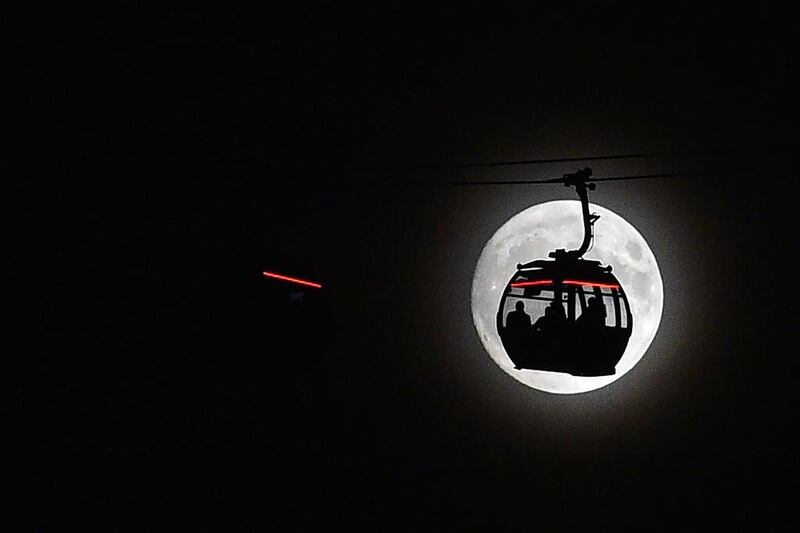Supermoons occur when a full moon or new moon coincides with the Moon’s closest approach to the Earth on its orbit.
Monday’s supermoon, technically know as a perigee-syzygy of the Earth-Moon-Sun system, was the biggest and the brightest since 1948, with the Moon appearing 14 per cent bigger and 30 per cent brighter, astronomers said.
At a distance of 356,509 kilometres from Earth, the Moon was also closer than at any time since 1948, and a supermoon of this scale will not occur again until 2034.
The Moon’s orbit around the Earth is slightly elliptical, so at times it is closer and at others it is farther away.
At perigree – the point at which the Moon is closest to Earth – the Moon can be as much as 14 per cent closer to Earth than at apogee, when it is farthest from our planet, according to the National Aeronautics and Space Administration.
The full moon appears that much larger in diameter and, because it is larger, reflects 30 per cent more sunlight on to the Earth.
The name supermoon was coined by astrologer Richard Nolle in 1979, who defined it as a new or full moon that occurs with the Moon at or near – within 90 per cent of – its closest approach to Earth in a given orbit.
rhaza@thenational.ae






